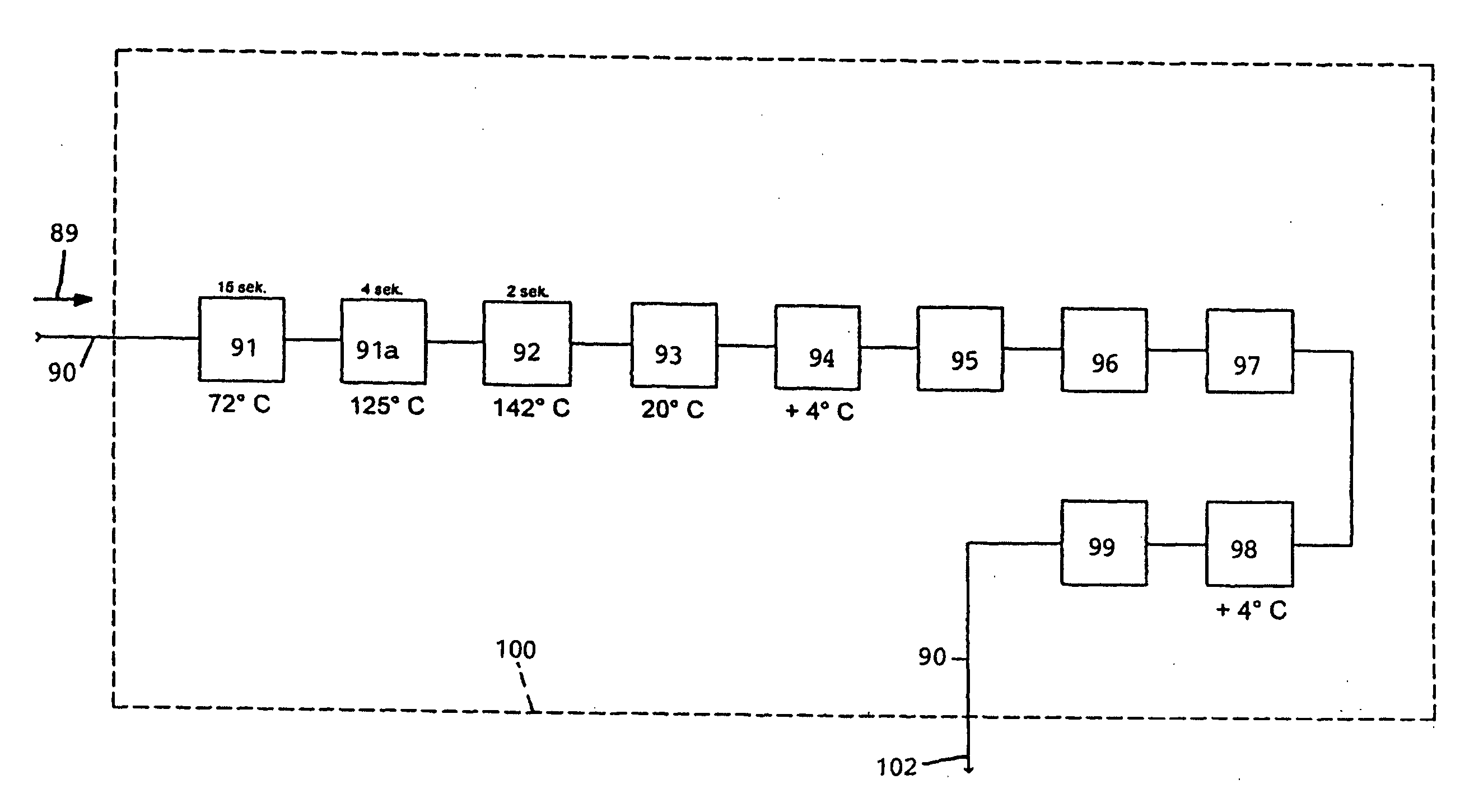Method and device for treating eggs in shells
a shell and egg technology, applied in the field of methods and devices, can solve the problems of only a small percentage of the organisms present in the egg, fundamental change in the egg, and the destruction of the whole egg, so as to prevent the alteration of the egg and/or denaturation of the proteins, the effect of negatively affecting the energy required for hatching, and preventing damage to the embryo
- Summary
- Abstract
- Description
- Claims
- Application Information
AI Technical Summary
Benefits of technology
Problems solved by technology
Method used
Image
Examples
Embodiment Construction
[0056]According to FIG. 1, a first tank 2 is provided in region A, by way of which the water returning, or returned, from the systems or devices according to FIG. 2 or FIG. 3, as indicated by arrow 4, can be directed to re-sterilization. This first small tank 2 is a compensation tank, e.g. for 250 liters, in which the treated water 4 from the process is first stored. When a high-level sensor 6 becomes active, a pump 8 underneath the compensation tank 2 automatically starts operating and sends the water from the compensation tank 2 into a second, large water storage tank 10. This procedure continues until the compensation tank 2 low-level is activated, which is to say, when the level in the compensation tank 2 is low, the low-level sensor 12 turns on and stops the pump 8.
[0057]The tank 10, which notably holds 5 tons, is actually a compensation and supply tank. It serves to supply the water to be used in the process to the sterilization unit and to store the water that was used in the...
PUM
 Login to View More
Login to View More Abstract
Description
Claims
Application Information
 Login to View More
Login to View More - R&D
- Intellectual Property
- Life Sciences
- Materials
- Tech Scout
- Unparalleled Data Quality
- Higher Quality Content
- 60% Fewer Hallucinations
Browse by: Latest US Patents, China's latest patents, Technical Efficacy Thesaurus, Application Domain, Technology Topic, Popular Technical Reports.
© 2025 PatSnap. All rights reserved.Legal|Privacy policy|Modern Slavery Act Transparency Statement|Sitemap|About US| Contact US: help@patsnap.com



